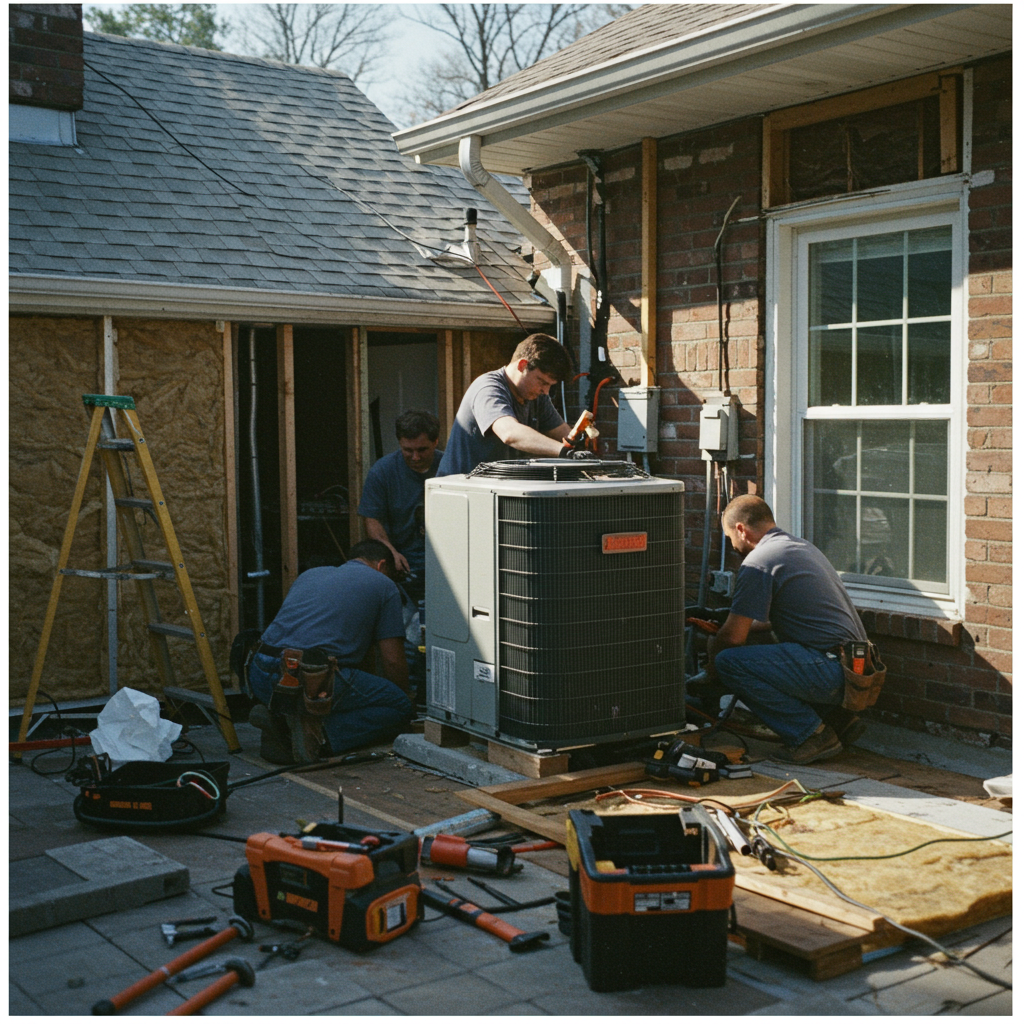When it comes to HVAC installation, timing matters. Choosing the right season can save you money, improve scheduling flexibility, and ensure your system is ready when you need it most. But when exactly is the best time of year to install an HVAC system?
In this guide, we break down the benefits and drawbacks of each season to help you make the most informed decision for your HVAC needs.
Why Timing Matters for HVAC Installation
Timing your HVAC installation can impact:
- Installation costs
- Availability of HVAC contractors
- Seasonal promotions and rebates
- Comfort during extreme temperatures
- Emergency repair risks
Planning your installation strategically can lead to smoother service and long-term energy savings.
Best Seasons for HVAC Installation
1. Spring – The Ideal Time for HVAC Installation
March to May is widely considered the best time for HVAC installation. Here’s why:
- Mild temperatures allow for flexible scheduling without the need for immediate heating or cooling.
- Lower demand means more availability and faster turnaround times from HVAC contractors.
- Seasonal deals and promotions are often available before summer peak season begins.
✅ Pros:
- Contractor availability
- Off-season pricing
- No urgent need for heating or cooling
❌ Cons:
- Weather can be unpredictable in early spring
2. Fall – Another Great Season for Installation
September to November is also a favorable time for HVAC installation. As the summer rush ends and before winter begins, HVAC companies often have more open schedules.
✅ Pros:
- Discounts on previous season’s models
- Preparation before winter cold sets in
- Less wait time for installation
❌ Cons:
- Cooler temperatures might cause heating urgency if delayed too long
Less Ideal Seasons for HVAC Installation
3. Summer – Peak Demand Season
Installing an HVAC system in June through August can be challenging. This is the busiest time of year for HVAC professionals, especially for air conditioning installations.
❌ Cons:
- Higher prices due to demand
- Limited scheduling flexibility
- Emergency calls take priority
✅ When it’s okay: If your old system breaks down, summer may be unavoidable—but expect premium pricing and possible delays.
4. Winter – Not Ideal for Full System Installation
December to February is typically slower, but cold weather makes furnace and heat pump installations more time-sensitive. Ductwork in freezing conditions can also be difficult.
❌ Cons:
- Risk of being without heat during installation
- Snow and ice can delay work
- HVAC systems may be tested in suboptimal conditions
✅ Best for: Replacing or upgrading only the furnace or heating components.
Tips for Planning Your HVAC Installation
- Schedule early: Book your installation at least 1–2 months in advance during spring or fall.
- Look for promotions: Manufacturers and local utility companies often offer seasonal rebates.
- Do a home energy audit: This helps size the right HVAC system before installation.
- Upgrade smart: Consider energy-efficient systems to lower future utility bills.
Final Thoughts: When Should You Install an HVAC System?
The best time to schedule your HVAC installation is during the off-peak seasons — spring or fall. These times offer the best combination of contractor availability, pricing, and comfortable weather. While emergencies can occur at any time, planning ahead gives you control and cost advantages.
requires careful consideration of licensing, experience, pricing, and customer service. By following these guidelines, you’ll ensure a smooth installation process and enjoy efficient, reliable climate control for years to come.


